Abstract
1. A combined physiological, histological and computer modelling study was carried out on muscle spindles of the cat tenuissimus muscle to examine whether there was any correlation between the functional interaction of putative encoding sites, operated separately by static and dynamic fusimotor neurones, and the topological structure of the preterminal branches of the primary sensory ending. 2. Spindles, whose I a responses to stretch and separate and combined static and dynamic fusimotor stimulation were recorded in physiological experiments, were located in situ. Subsequently the ramifications of the sensory ending were reconstructed histologically, and the topology of the branch tree was used in computer simulations of I a responses to examine the effect of the electronic separation of encoding sites on the static-dynamic interaction pattern. 3. Interactions between separate static and dynamic inputs, manifest in responses to combineed stimulation, were quantified by a coefficient of interaction (Ci) which, by definition, was 1 for strictly linear summation of separate inputs and zero for maximum occlusion between inputs. 4. For the majority of spindles static-dynamic interactions were characterized by pronounced occlusion (C1 < 0.35). In these spindles putative encoding sites (the peripheral heminodes of the branches supplying the intrafusal fibres activated by individual fusimotor efferents) were separated by a minimum conduction path of between three and ten myelinated segments (2-9 nodes of Ranvier). In contrast, significant summation (C1, approximately 0.7) was found in only one spindle. In this case putative encoding sites were separated by a single node. 5. Occlusion was not due to encoder saturation and it could not be accounted for by any other known physiological mechanisms (intrafusal fatigue or unloading). It is therefore attributed to competitive pacemaker interaction between encoding sites which are largely selectively operated by static and dynamic fusimotor efferents. 6. Model simulations of real preterminal-branch tree structures confirmed that short conduction paths between encoding sites were associated with manifest summation, whereas longer minimum conduction paths favoured pronounced occlusion. 7. In the extreme, occlusion could be so pronounced as to give rise to negative values of C1 during critical segments of response cycles. This was associated with lower discharge rates during combined static and dynamic stimulation than the higher of the individual stimulation effects. This phenomenon is referred to as hyperocclusion. Computer simulations demonstrated that hyperocclusion could be accounted for by a slow ionic adaptation process. e.g. by a very slowly activating K+ conductance.
Full text
PDF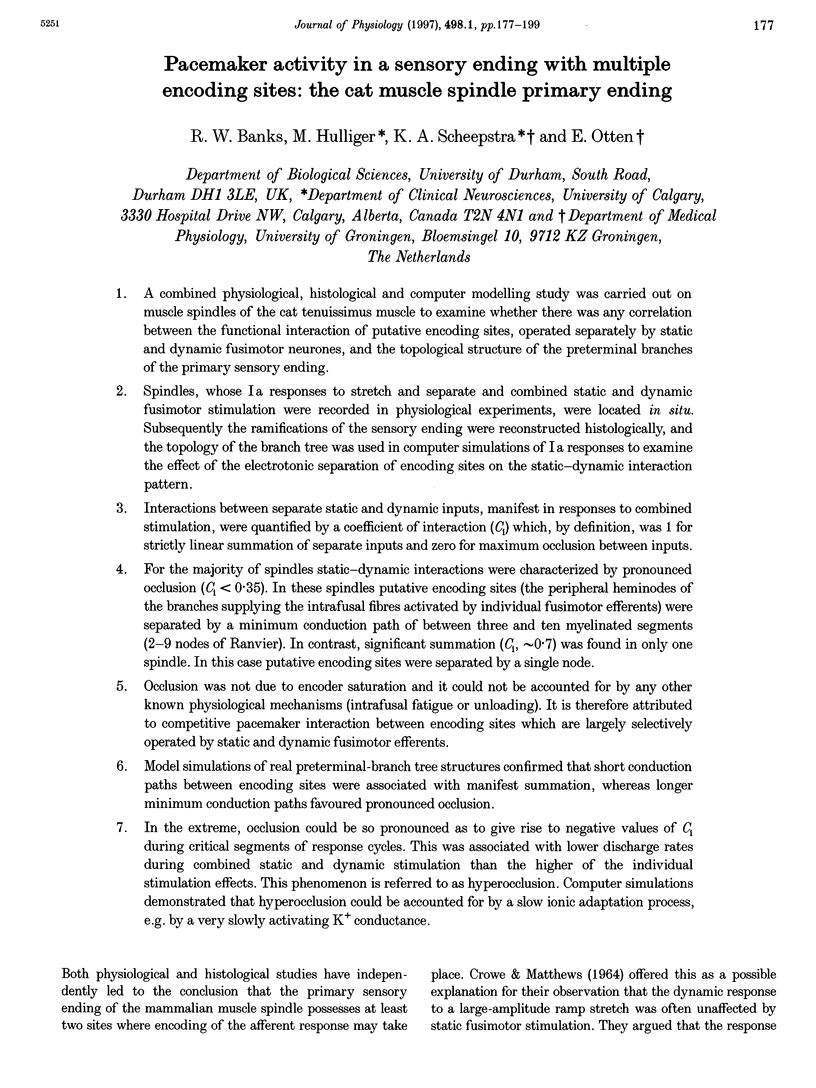
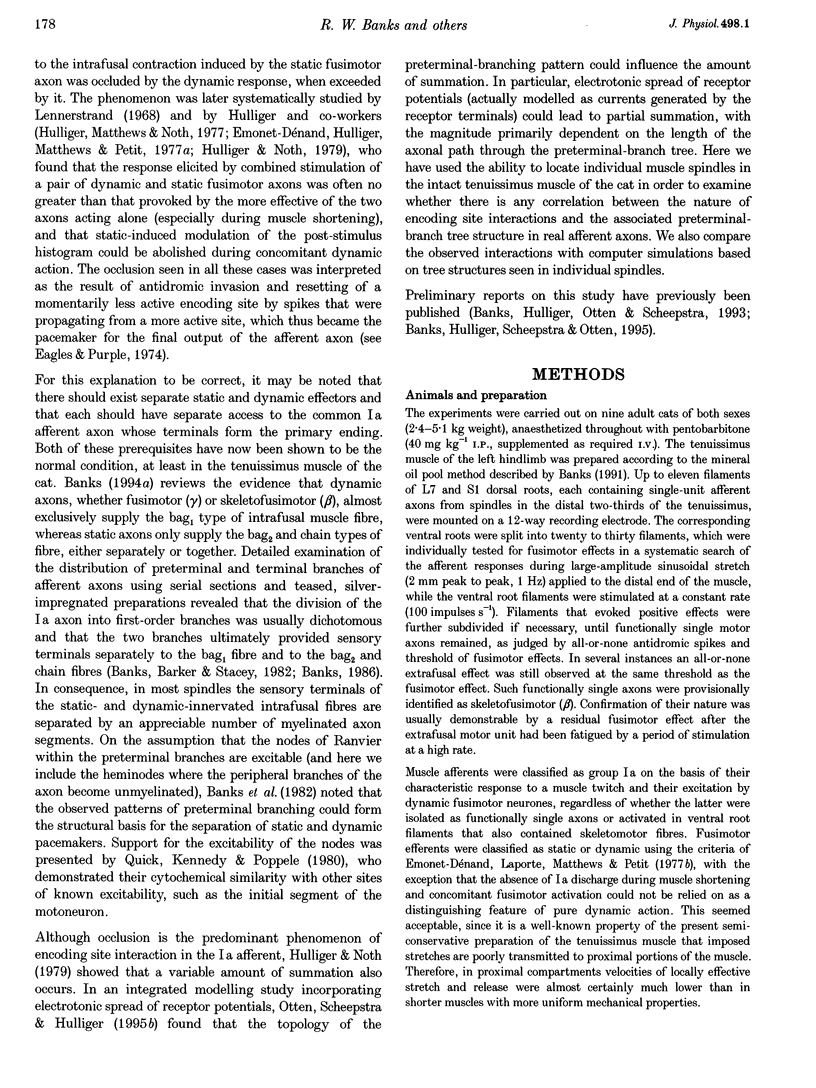
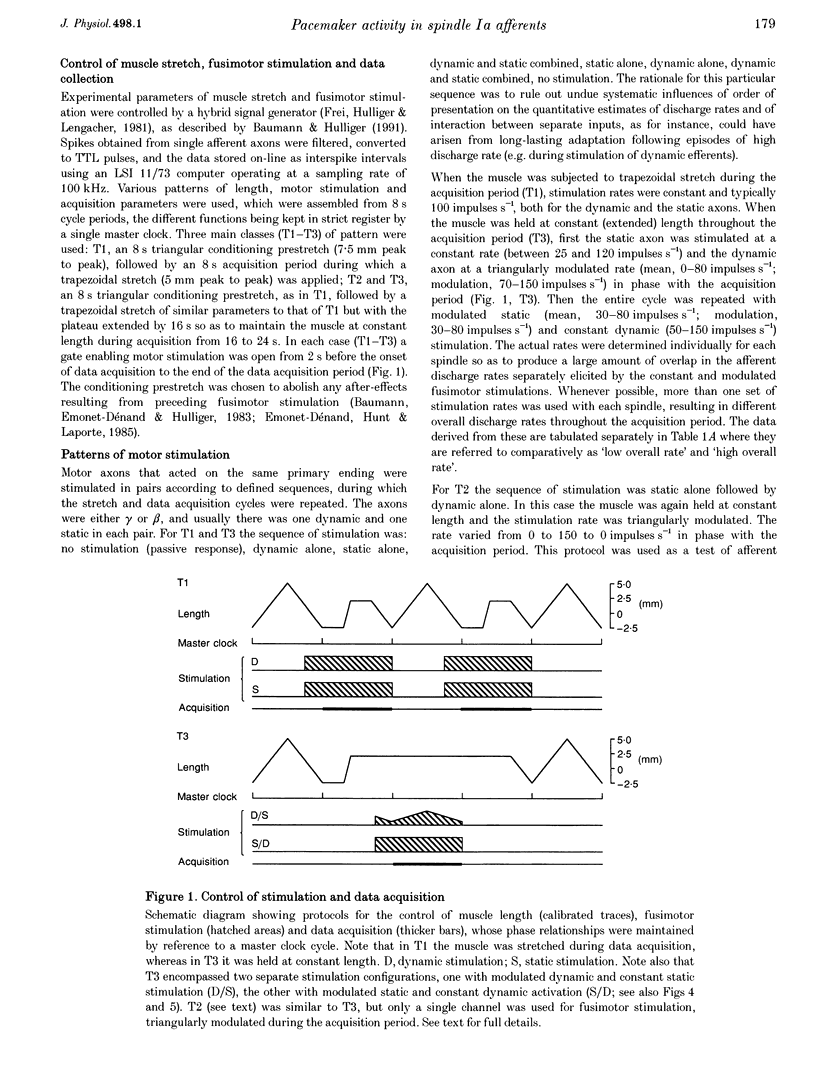
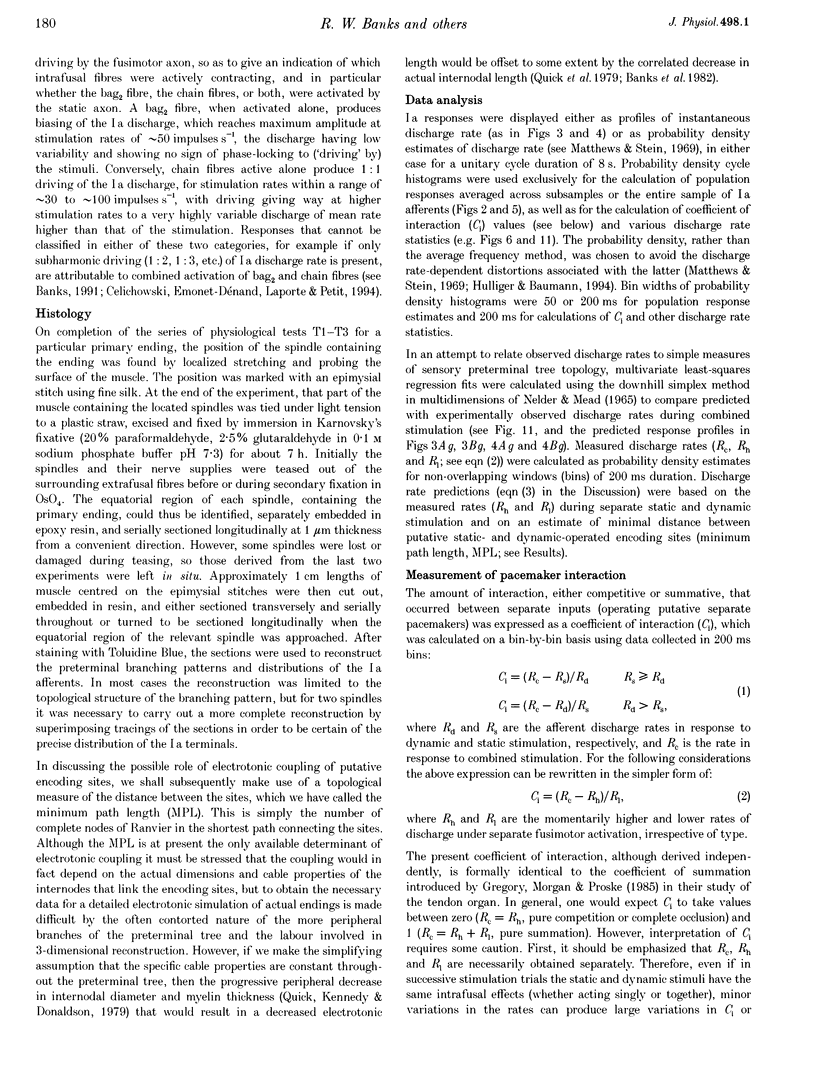
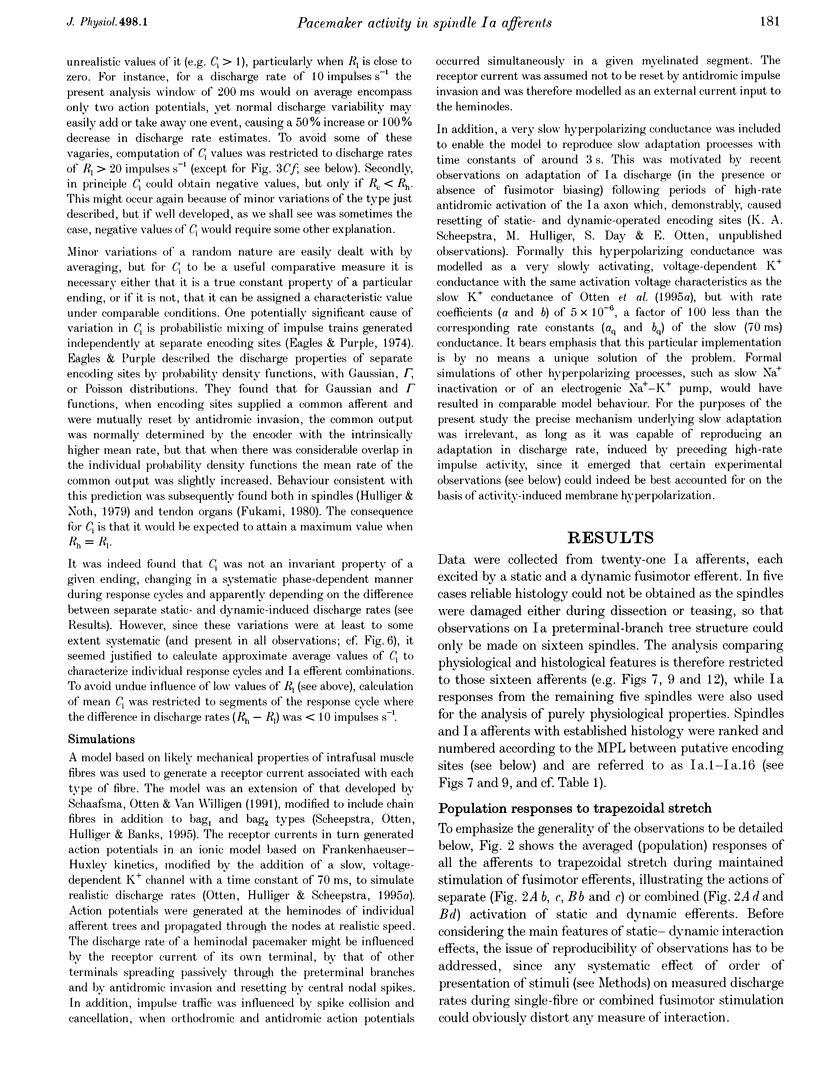
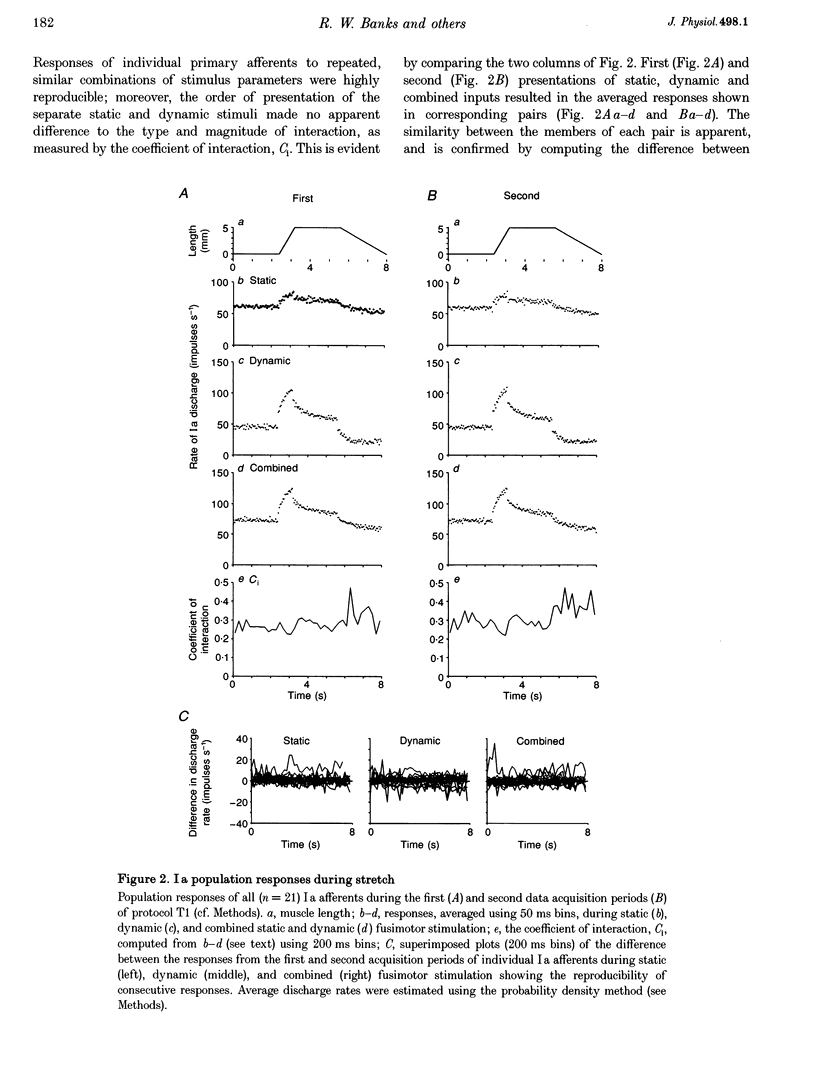
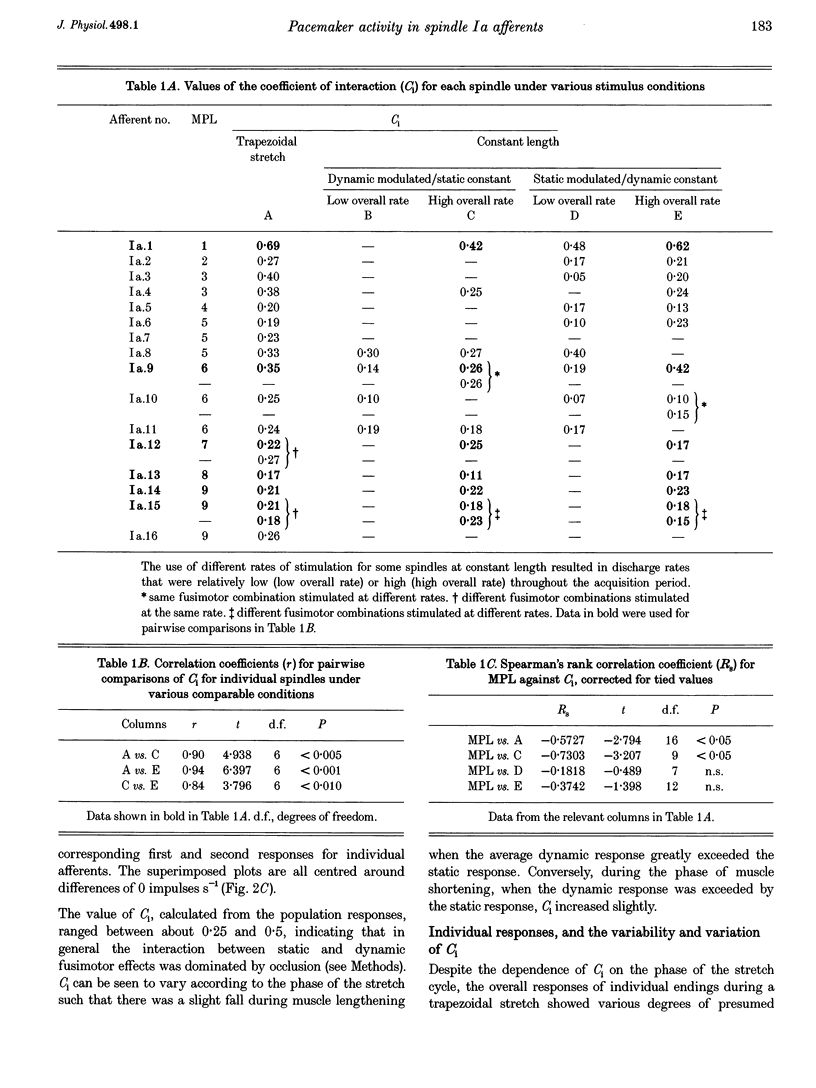
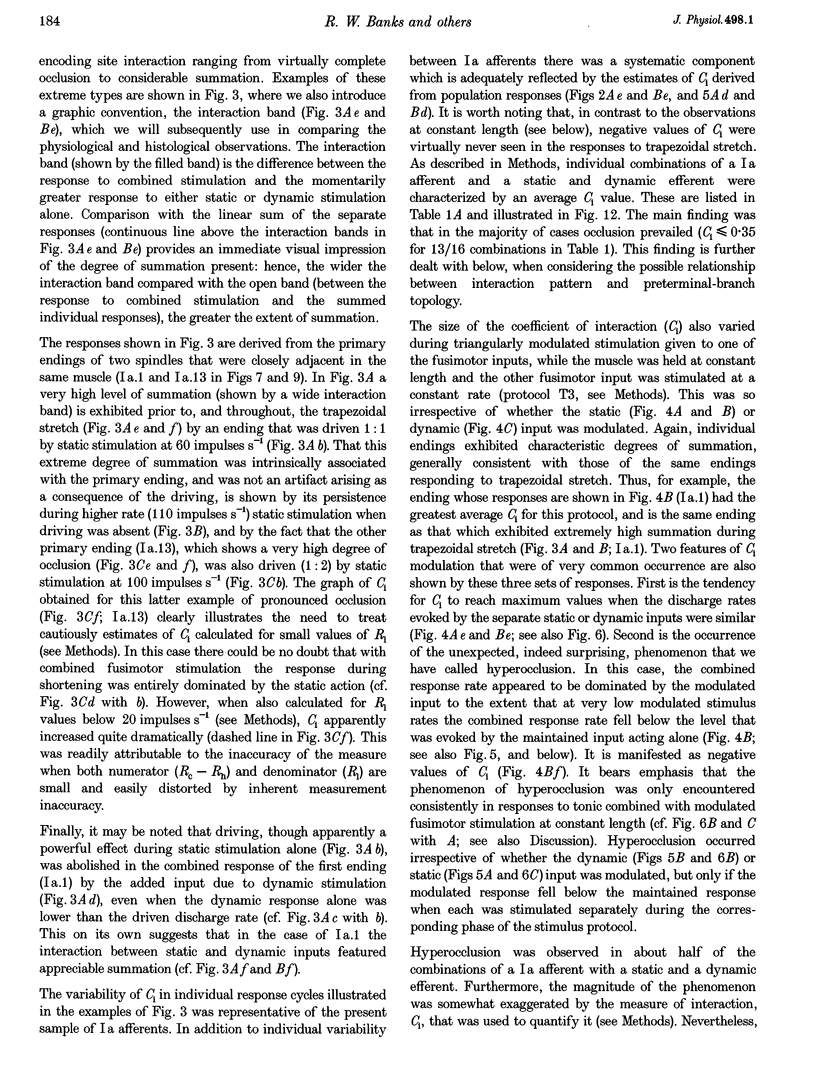
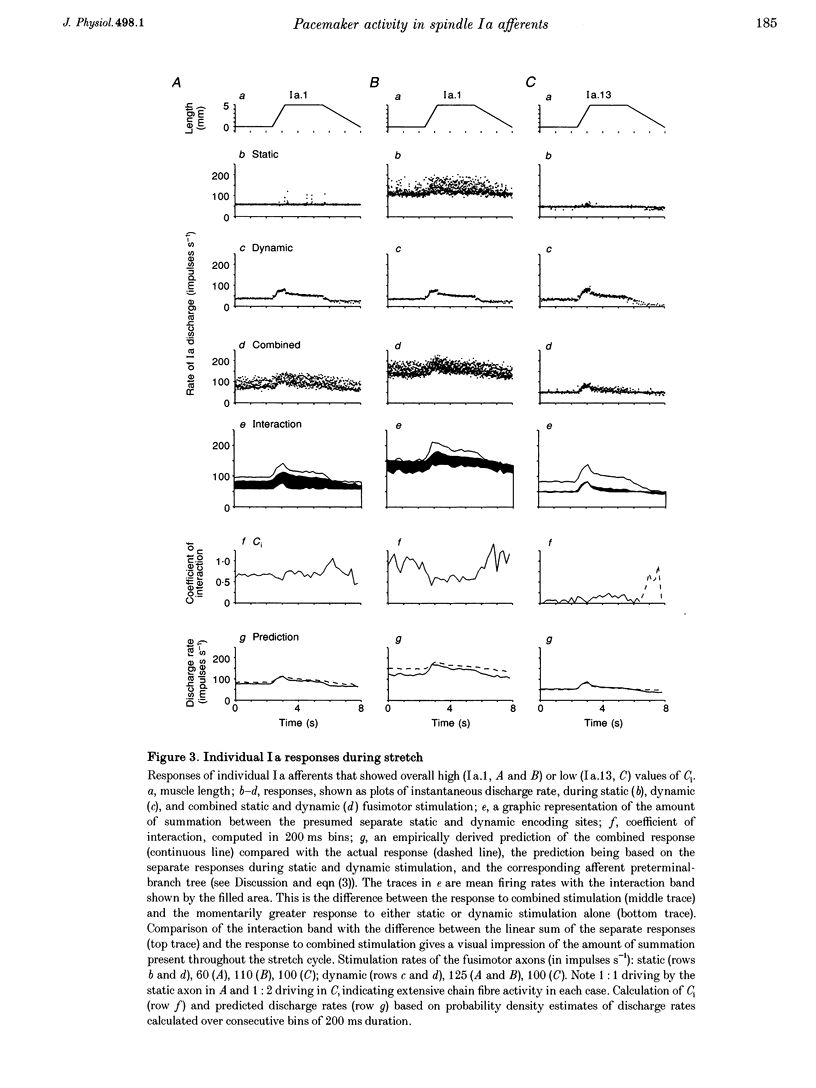
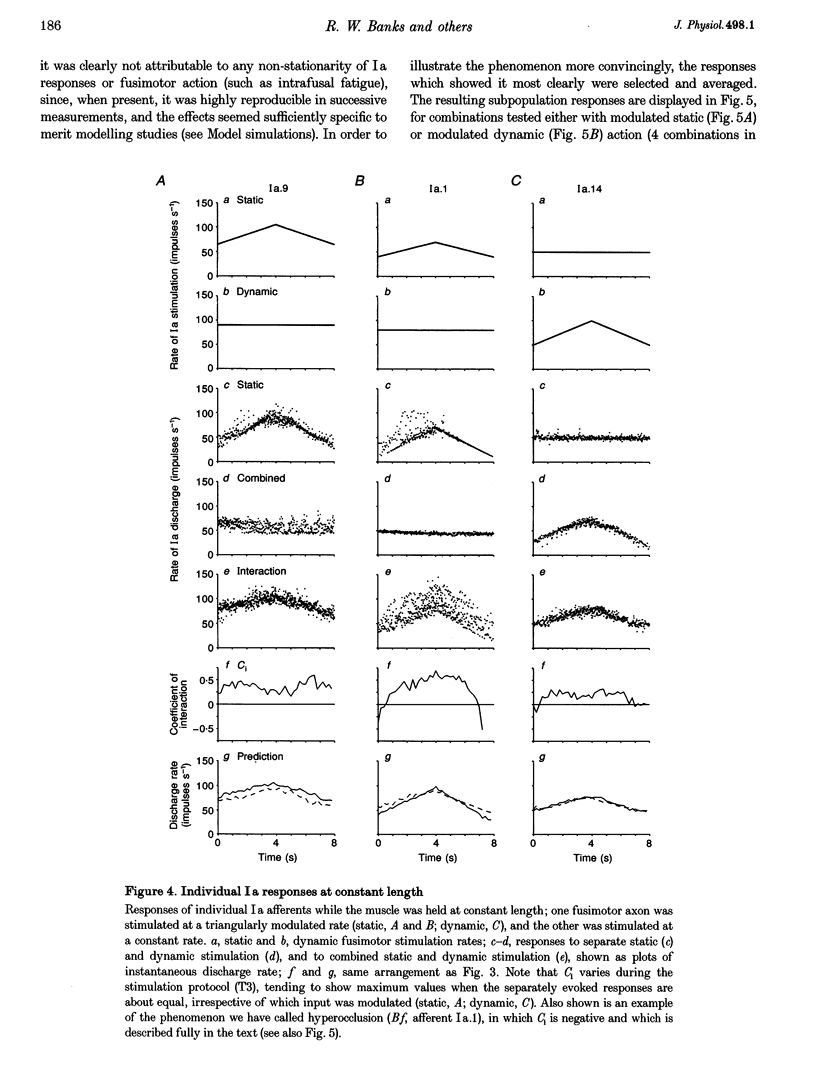

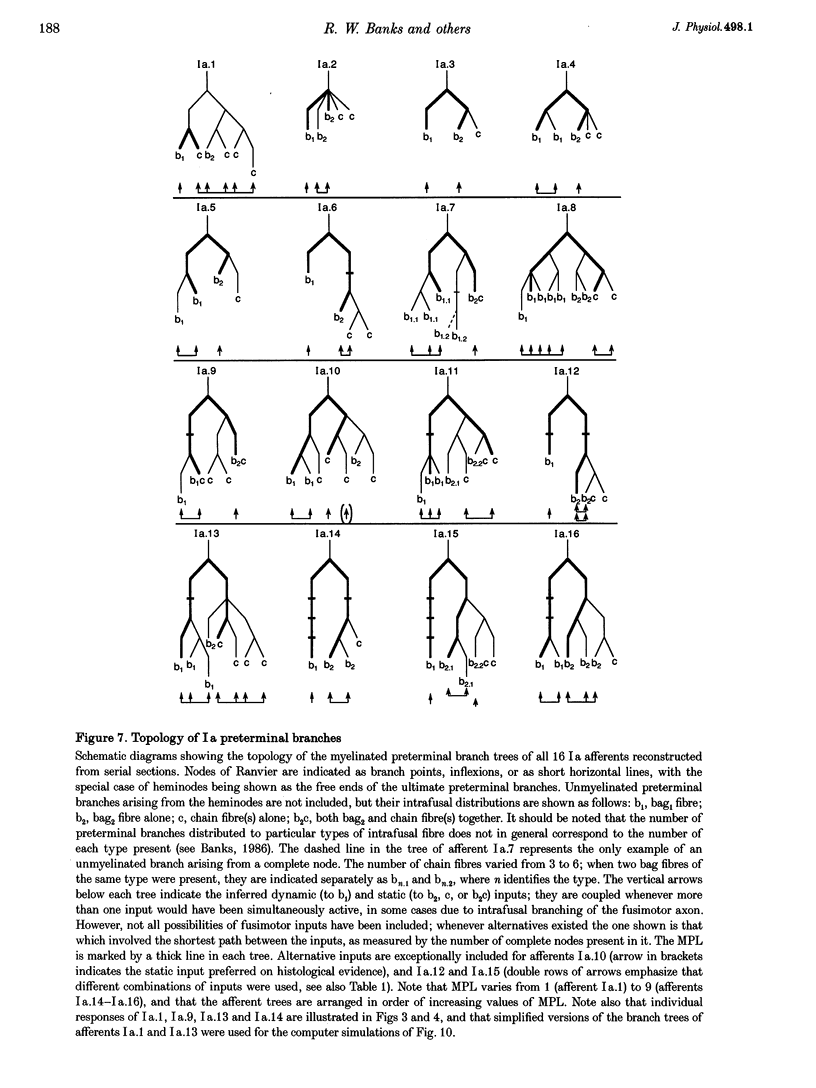
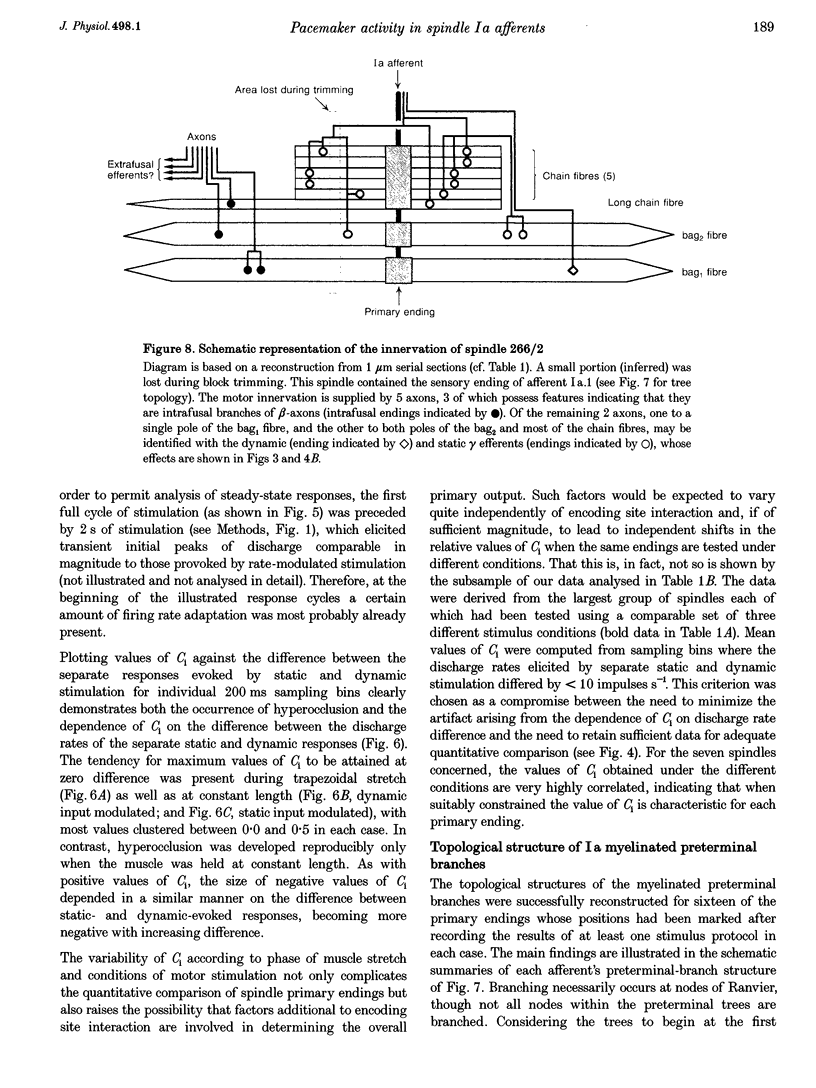
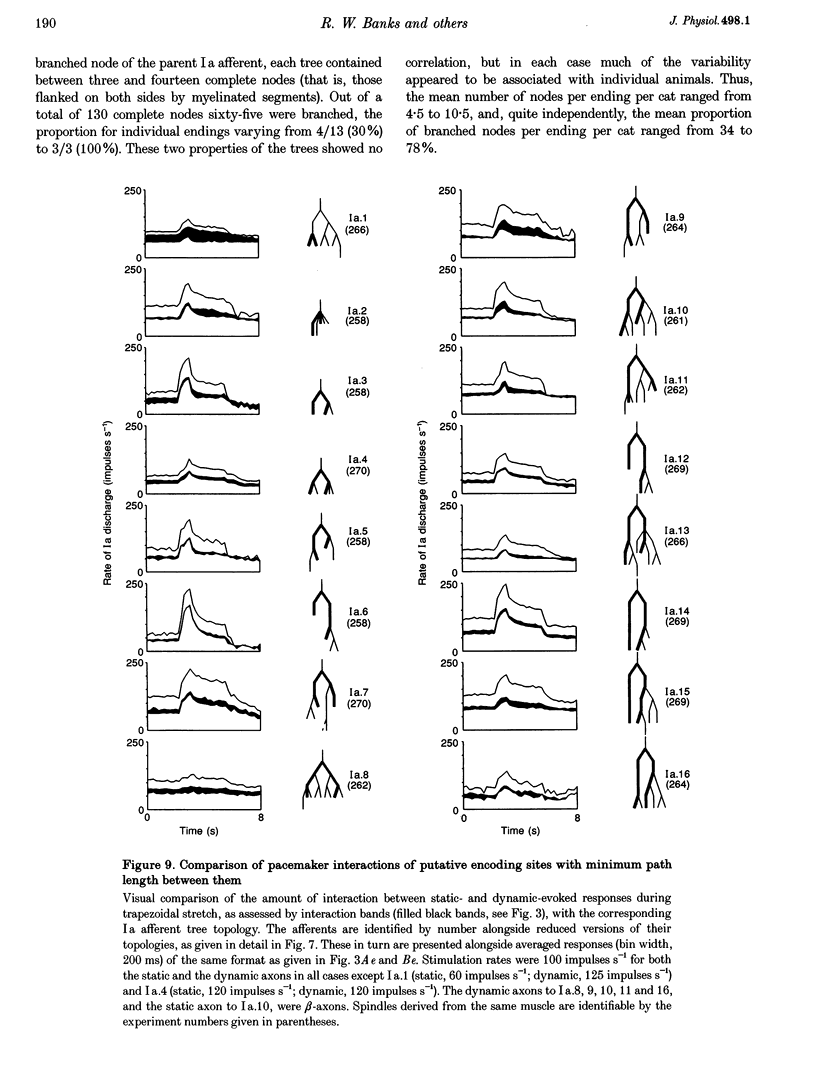
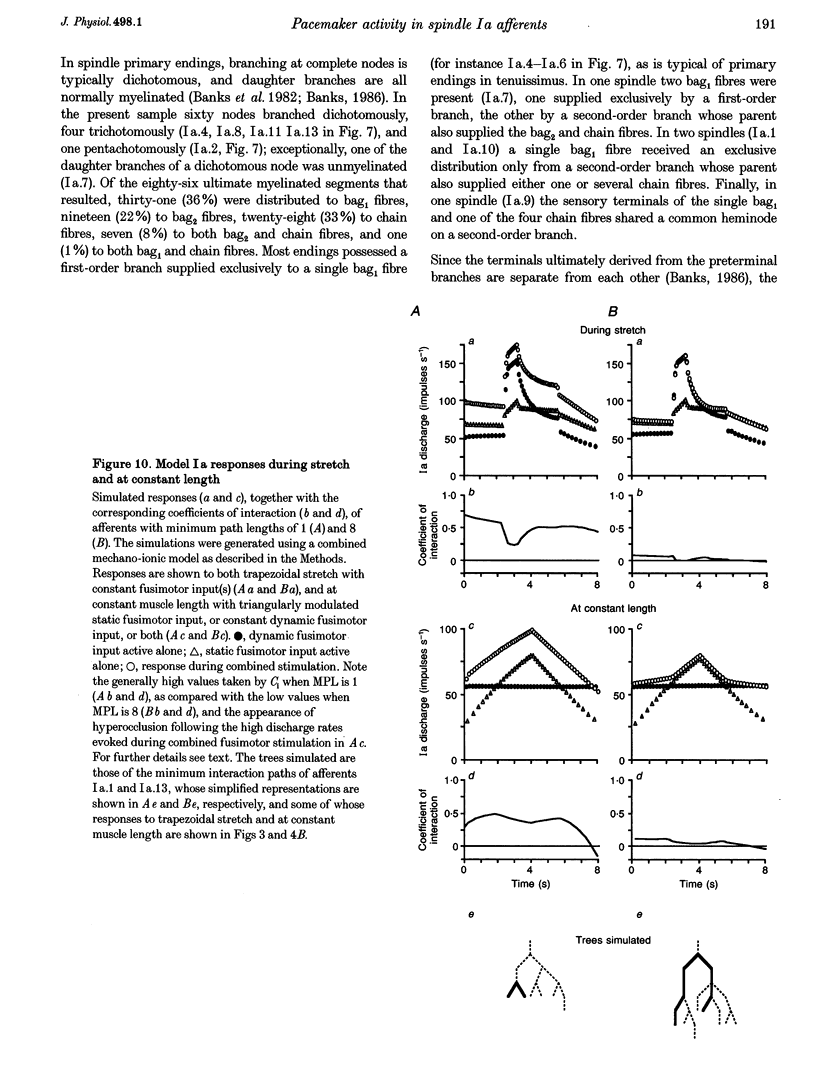
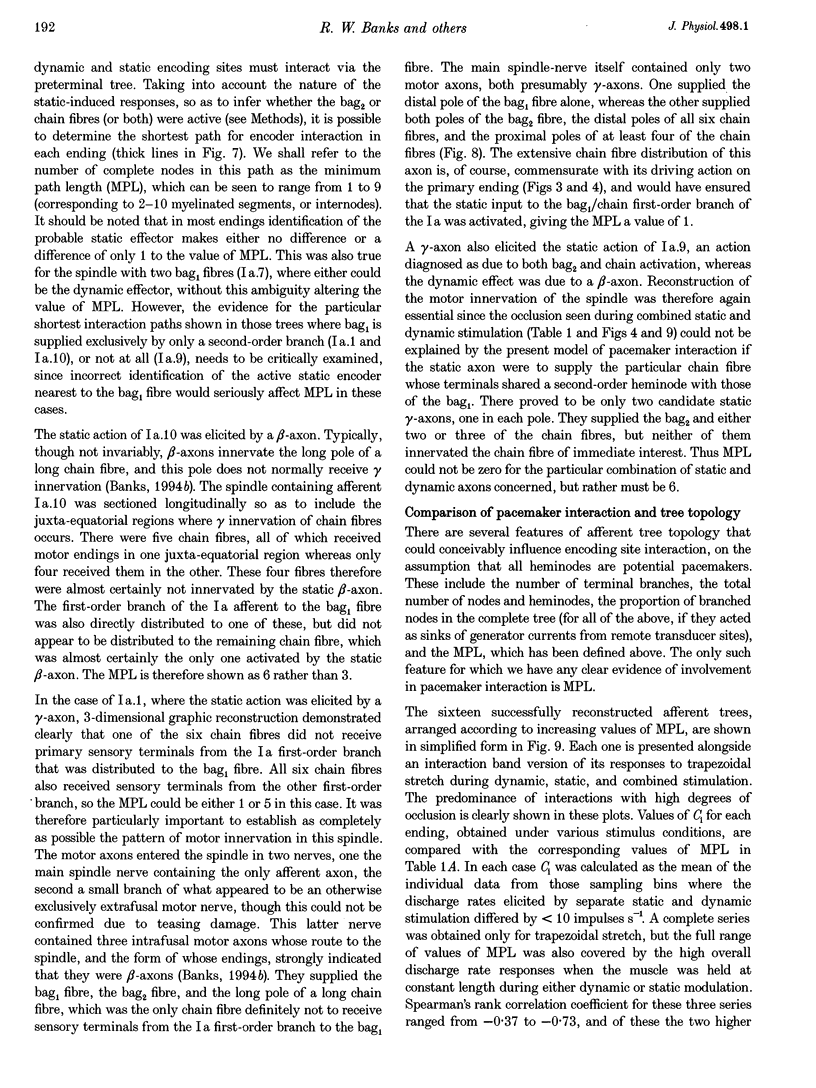
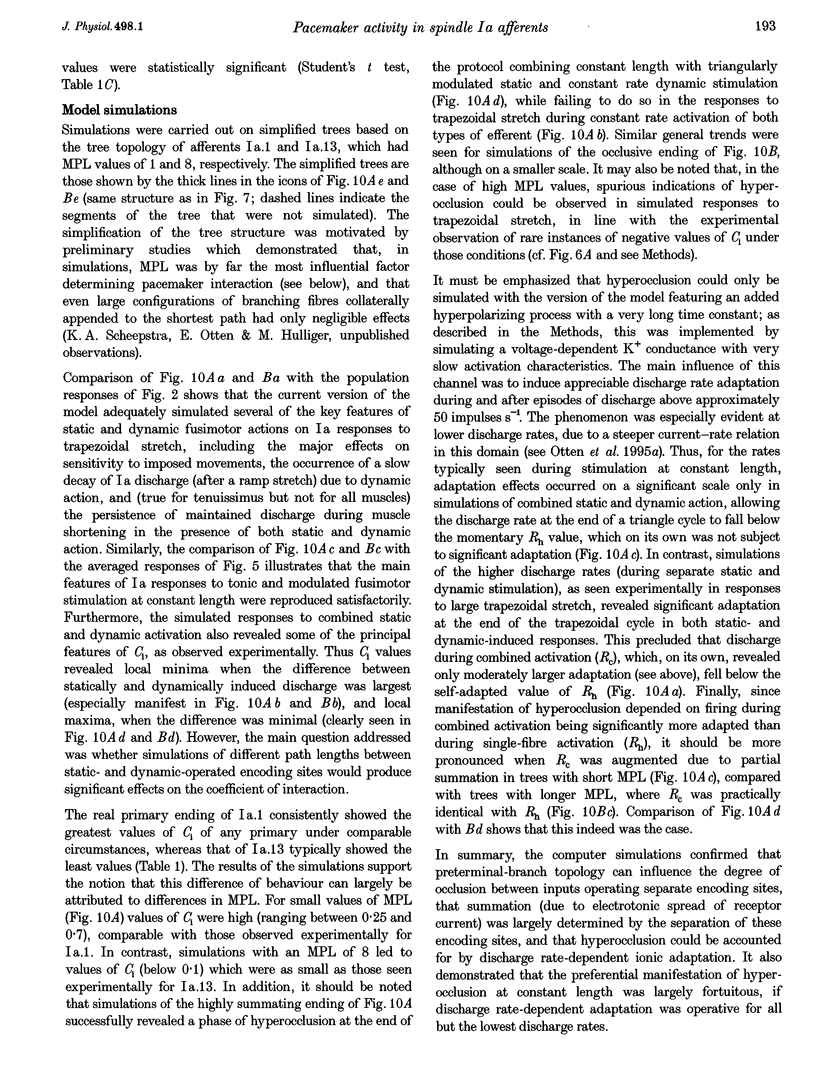
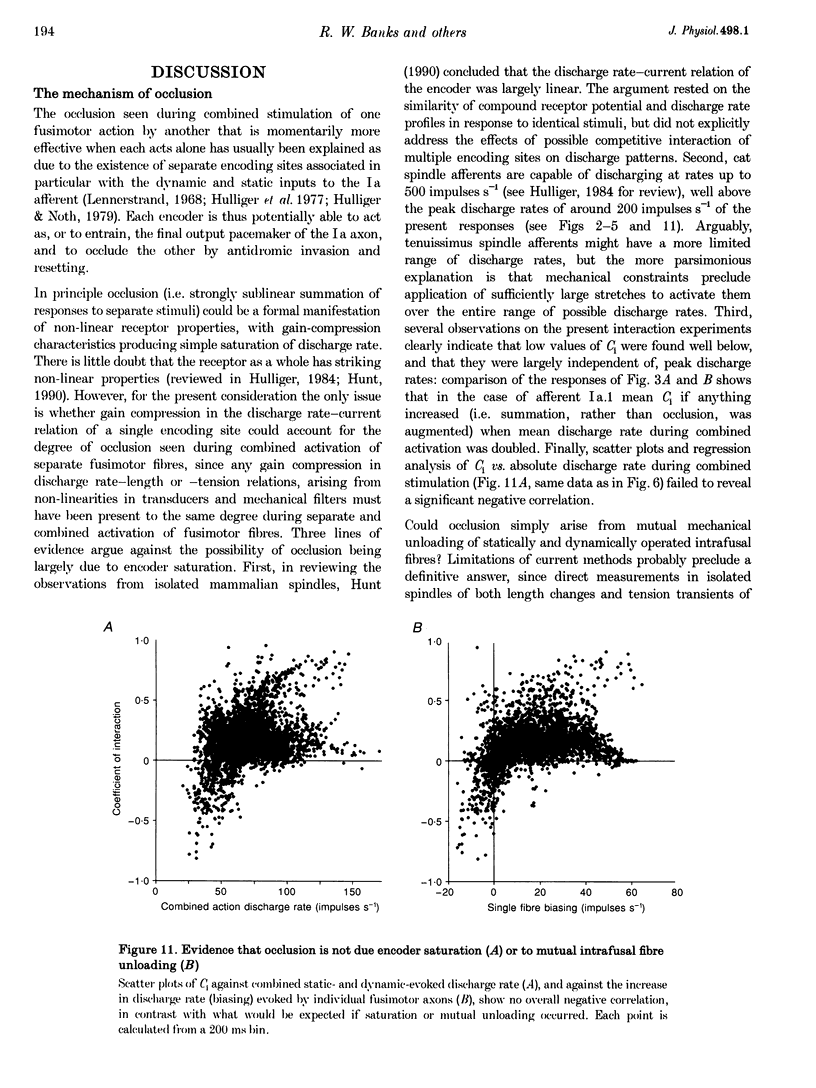
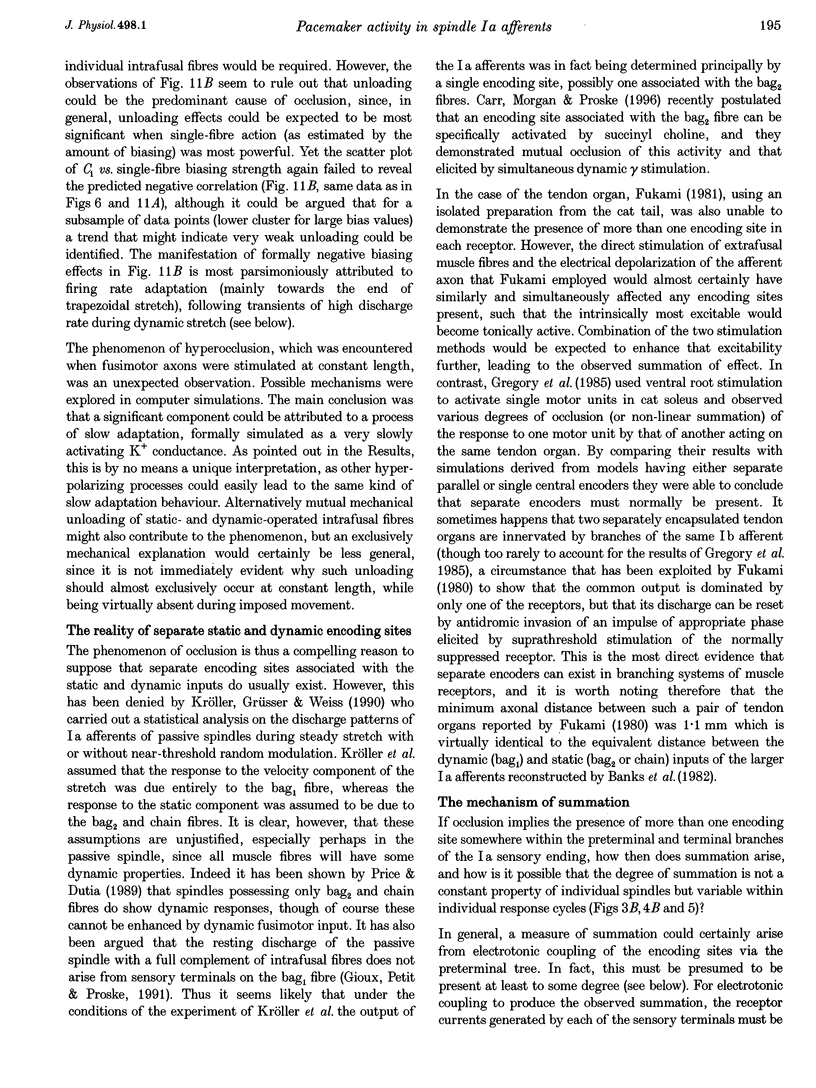
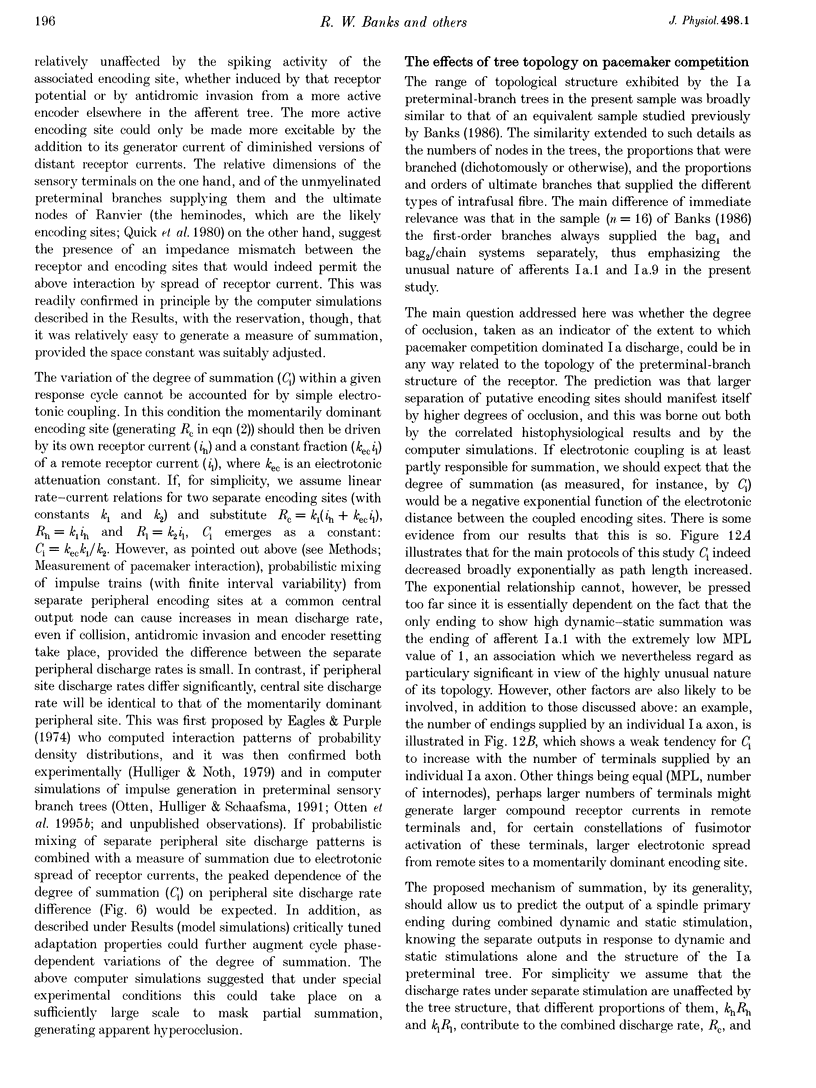
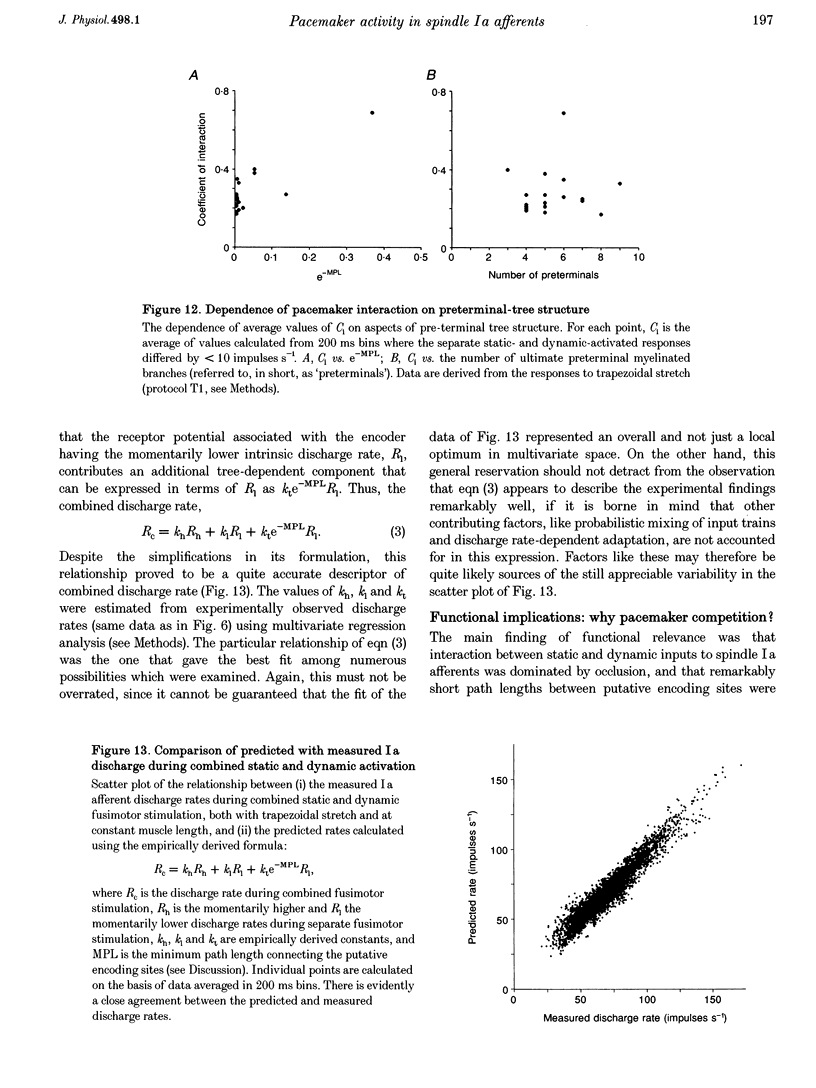
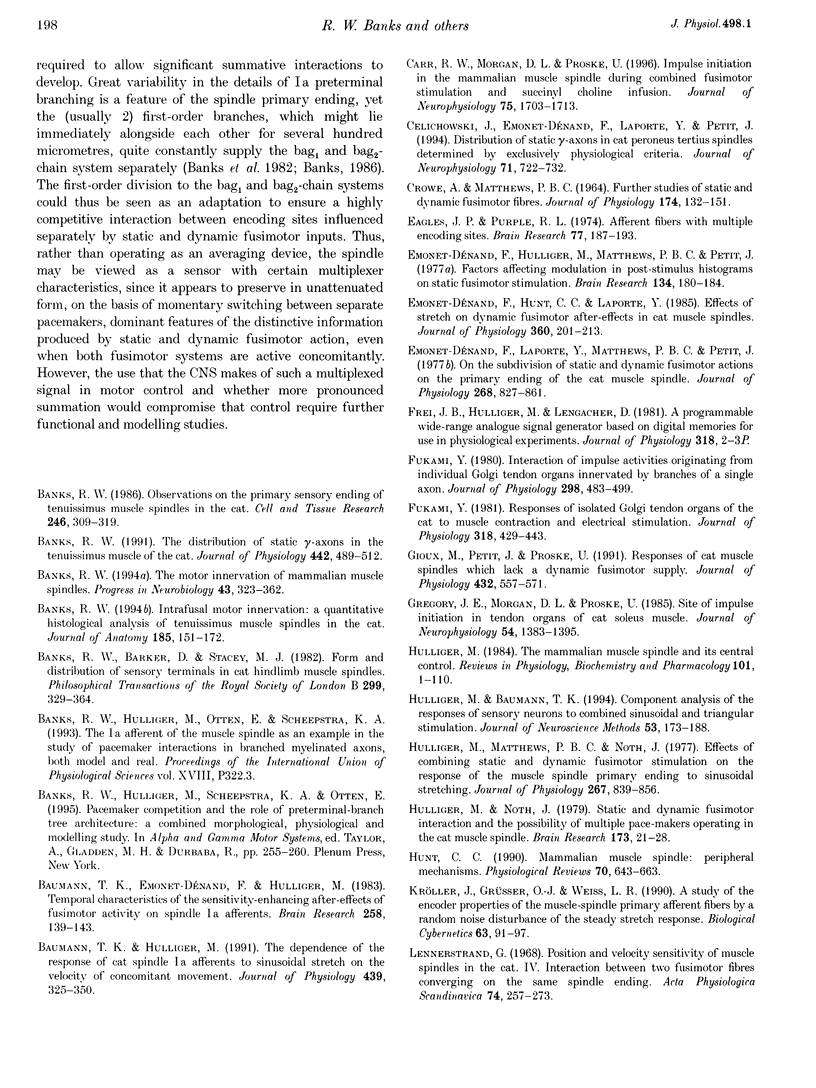
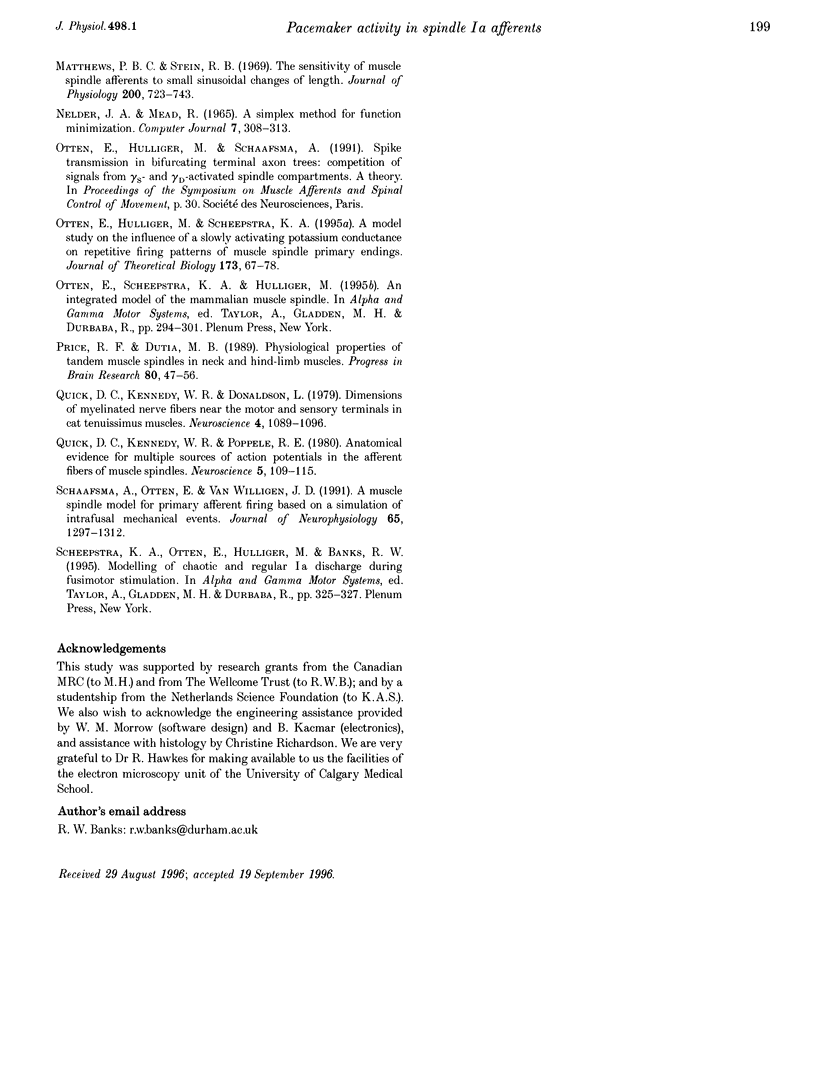
Selected References
These references are in PubMed. This may not be the complete list of references from this article.
- Banks R. W., Barker D., Stacey M. J. Form and distribution of sensory terminals in cat hindlimb muscle spindles. Philos Trans R Soc Lond B Biol Sci. 1982 Nov 4;299(1096):329–364. doi: 10.1098/rstb.1982.0136. [DOI] [PubMed] [Google Scholar]
- Banks R. W. Intrafusal motor innervation: a quantitative histological analysis of tenuissimus muscle spindles in the cat. J Anat. 1994 Aug;185(Pt 1):151–172. [PMC free article] [PubMed] [Google Scholar]
- Banks R. W. Observations on the primary sensory ending of tenuissimus muscle spindles in the cat. Cell Tissue Res. 1986;246(2):309–319. doi: 10.1007/BF00215893. [DOI] [PubMed] [Google Scholar]
- Banks R. W. The distribution of static gamma-axons in the tenuissimus muscle of the cat. J Physiol. 1991 Oct;442:489–512. doi: 10.1113/jphysiol.1991.sp018805. [DOI] [PMC free article] [PubMed] [Google Scholar]
- Banks R. W. The motor innervation of mammalian muscle spindles. Prog Neurobiol. 1994 Jul-Aug;43(4-5):323–362. doi: 10.1016/0301-0082(94)90059-0. [DOI] [PubMed] [Google Scholar]
- CROWE A., MATTHEWS P. B. FURTHER STUDIES OF STATIC AND DYNAMIC FUSIMOTOR FIBRES. J Physiol. 1964 Oct;174:132–151. doi: 10.1113/jphysiol.1964.sp007477. [DOI] [PMC free article] [PubMed] [Google Scholar]
- Carr R. W., Morgan D. L., Proske U. Impulse initiation in the mammalian muscle spindle during combined fusimotor stimulation and succinyl choline infusion. J Neurophysiol. 1996 Apr;75(4):1703–1713. doi: 10.1152/jn.1996.75.4.1703. [DOI] [PubMed] [Google Scholar]
- Celichowski J., Emonet-Dénand F., Laporte Y., Petit J. Distribution of static gamma axons in cat peroneus tertius spindles determined by exclusively physiological criteria. J Neurophysiol. 1994 Feb;71(2):722–732. doi: 10.1152/jn.1994.71.2.722. [DOI] [PubMed] [Google Scholar]
- Eagles J. P., Purple R. L. Afferent fibers with multiple encoding sites. Brain Res. 1974 Sep 6;77(2):187–193. doi: 10.1016/0006-8993(74)90783-5. [DOI] [PubMed] [Google Scholar]
- Emonet-Dénand F., Hulliger M., Matthews P. B., Petit J. Factors affecting modulation in post-stimulus histograms on static fusimotor stimulation. Brain Res. 1977 Sep 23;134(1):180–184. doi: 10.1016/0006-8993(77)90938-6. [DOI] [PubMed] [Google Scholar]
- Emonet-Dénand F., Hunt C. C., Laporte Y. Effects of stretch on dynamic fusimotor after-effects in cat muscle spindles. J Physiol. 1985 Mar;360:201–213. doi: 10.1113/jphysiol.1985.sp015612. [DOI] [PMC free article] [PubMed] [Google Scholar]
- Emonet-Dénand F., Laporte Y., Matthews P. B., Petit J. On the subdivision of static and dynamic fusimotor actions on the primary ending of the cat muscle spindle. J Physiol. 1977 Jul;268(3):827–861. doi: 10.1113/jphysiol.1977.sp011884. [DOI] [PMC free article] [PubMed] [Google Scholar]
- Fukami Y. Interaction of impulse activities originating from individual Golgi tendon organs innervated by branches of a single axon. J Physiol. 1980 Jan;298:483–499. doi: 10.1113/jphysiol.1980.sp013096. [DOI] [PMC free article] [PubMed] [Google Scholar]
- Fukami Y. Responses of isolated Golgi tendon organs of the cat to muscle contraction and electrical stimulation. J Physiol. 1981 Sep;318:429–443. doi: 10.1113/jphysiol.1981.sp013876. [DOI] [PMC free article] [PubMed] [Google Scholar]
- Gioux M., Petit J., Proske U. Responses of cat muscle spindles which lack a dynamic fusimotor supply. J Physiol. 1991 Jan;432:557–571. doi: 10.1113/jphysiol.1991.sp018400. [DOI] [PMC free article] [PubMed] [Google Scholar]
- Gregory J. E., Morgan D. L., Proske U. Site of impulse initiation in tendon organs of cat soleus muscle. J Neurophysiol. 1985 Dec;54(6):1383–1395. doi: 10.1152/jn.1985.54.6.1383. [DOI] [PubMed] [Google Scholar]
- Hulliger M., Baumann T. K. Component analysis of the responses of sensory neurons to combined sinusoidal and triangular stimulation. J Neurosci Methods. 1994 Aug;53(2):173–188. doi: 10.1016/0165-0270(94)90175-9. [DOI] [PubMed] [Google Scholar]
- Hulliger M., Matthews P. B., Noth J. Effects of combining static and dynamic fusimotor stimulation on the response of the muscle spindle primary ending to sinusoidal stretching. J Physiol. 1977 Jun;267(3):839–856. doi: 10.1113/jphysiol.1977.sp011840. [DOI] [PMC free article] [PubMed] [Google Scholar]
- Hulliger M., Noth J. Static and dynamic fusimotor interaction and the possibility of multiple pace-makers operating in the cat muscle spindle. Brain Res. 1979 Sep 7;173(1):21–28. doi: 10.1016/0006-8993(79)91092-8. [DOI] [PubMed] [Google Scholar]
- Hulliger M. The mammalian muscle spindle and its central control. Rev Physiol Biochem Pharmacol. 1984;101:1–110. doi: 10.1007/BFb0027694. [DOI] [PubMed] [Google Scholar]
- Hunt C. C. Mammalian muscle spindle: peripheral mechanisms. Physiol Rev. 1990 Jul;70(3):643–663. doi: 10.1152/physrev.1990.70.3.643. [DOI] [PubMed] [Google Scholar]
- Kröller J., Grüsser O. J., Weiss L. R. A study of the encoder properties of muscle-spindle primary afferent fibers by a random noise disturbance of the steady stretch response. Biol Cybern. 1990;63(2):91–97. doi: 10.1007/BF00203030. [DOI] [PubMed] [Google Scholar]
- Lennerstrand G. Position and velocity sensitivity of muscle spindles in the cat. IV. Interaction between two fusimotor fibres converging on the same spindle ending. Acta Physiol Scand. 1968 Nov;74(3):257–273. doi: 10.1111/j.1748-1716.1968.tb04235.x. [DOI] [PubMed] [Google Scholar]
- Matthews P. B., Stein R. B. The sensitivity of muscle spindle afferents to small sinusoidal changes of length. J Physiol. 1969 Feb;200(3):723–743. doi: 10.1113/jphysiol.1969.sp008719. [DOI] [PMC free article] [PubMed] [Google Scholar]
- Otten E., Hulliger M., Scheepstra K. A. A model study on the influence of a slowly activating potassium conductance on repetitive firing patterns of muscle spindle primary endings. J Theor Biol. 1995 Mar 7;173(1):67–78. doi: 10.1006/jtbi.1995.0044. [DOI] [PubMed] [Google Scholar]
- Price R. F., Dutia M. B. Physiological properties of tandem muscle spindles in neck and hind-limb muscles. Prog Brain Res. 1989;80:47–7. doi: 10.1016/s0079-6123(08)62198-6. [DOI] [PubMed] [Google Scholar]
- Quick D. C., Kennedy W. R., Donaldson L. Dimensions of myelinated nerve fibers near the motor and sensory terminals in cat tenuissimus muscles. Neuroscience. 1979;4(8):1089–1096. doi: 10.1016/0306-4522(79)90190-8. [DOI] [PubMed] [Google Scholar]
- Quick D. C., Kennedy W. R., Poppele R. E. Anatomical evidence for multiple sources of action potentials in the afferent fibers of muscle spindles. Neuroscience. 1980;5(1):109–115. doi: 10.1016/0306-4522(80)90076-7. [DOI] [PubMed] [Google Scholar]
- Schaafsma A., Otten E., Van Willigen J. D. A muscle spindle model for primary afferent firing based on a simulation of intrafusal mechanical events. J Neurophysiol. 1991 Jun;65(6):1297–1312. doi: 10.1152/jn.1991.65.6.1297. [DOI] [PubMed] [Google Scholar]


